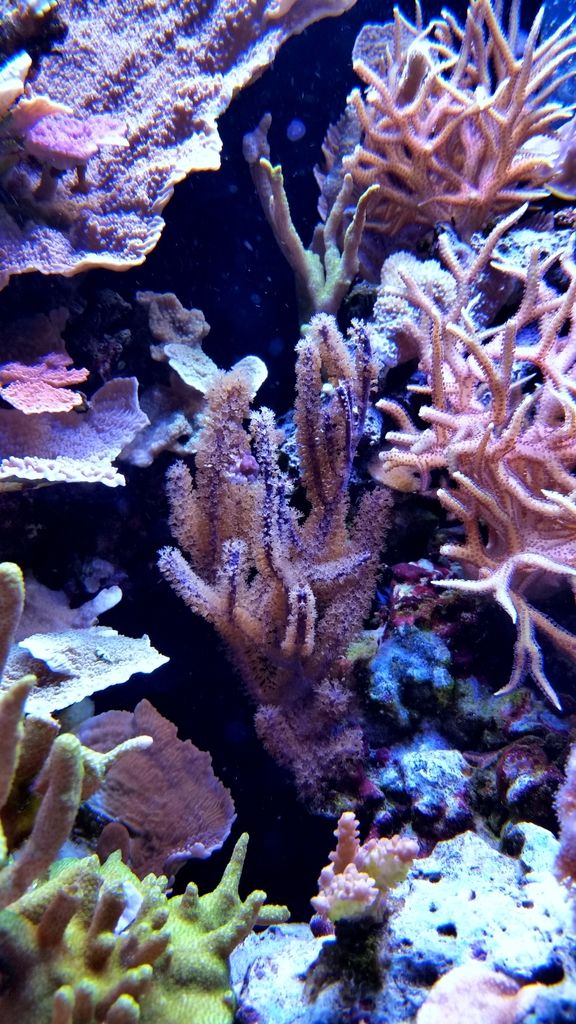silver97
Active Member
Hi all!
Ive just recently started my tank, its only about 2 months old now, and when i first went to get fish i got a frag of what i thought was some xenia coral. Within the past week, and after studying various other types of corals id like to have, i realized mine doesn't look like a xenia as much as i thought it did. My mistake entirely, i didnt really do much research and it was a semi-impulse buy, only because i heard they were hardy and spread quickly but also because i liked how beautiful they were
Anyway, Id like to find out what this type of coral is so i can care for it properly, recently i bought the coral food known as 'Coral Frenzy' and started feeding it to my tank (at time of writing i have literally only used it once), so no noticeable changes but i have also started dosing calcium inn my tank and it seems to have grown a bit from when i got it. Not entirely sure what it is again, one of the moderators here thought it looked like a kenya tree coral, not sure so any and all ID help would be appreciated.
Thanks in advance
Ive just recently started my tank, its only about 2 months old now, and when i first went to get fish i got a frag of what i thought was some xenia coral. Within the past week, and after studying various other types of corals id like to have, i realized mine doesn't look like a xenia as much as i thought it did. My mistake entirely, i didnt really do much research and it was a semi-impulse buy, only because i heard they were hardy and spread quickly but also because i liked how beautiful they were
Anyway, Id like to find out what this type of coral is so i can care for it properly, recently i bought the coral food known as 'Coral Frenzy' and started feeding it to my tank (at time of writing i have literally only used it once), so no noticeable changes but i have also started dosing calcium inn my tank and it seems to have grown a bit from when i got it. Not entirely sure what it is again, one of the moderators here thought it looked like a kenya tree coral, not sure so any and all ID help would be appreciated.
Thanks in advance






